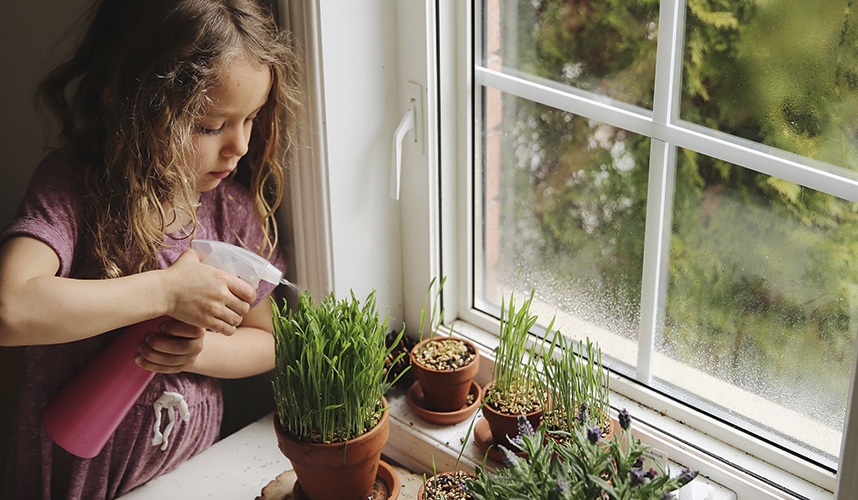Yesterday I cycled to Brighton with my daughter. No big deal, you might think. It’s about three miles along a long straight cycle path. Except that a week beforehand, she couldn’t ride a bike at all. She had a bike, she has had several bikes, some with stabilisers and some without, but she couldn’t ride alone. I had to run along beside her, holding on, and rescuing her when she leant over too far or got scared.
I have spent a long time running alongside her bicycle. So has my mother, and her father. She didn’t feel ready to go it alone. Until last week, when she said she wanted to cycle to Brighton and was going to learn how. Out we went and she said she was scared. She said she felt the fear every time she started. Then she decided that this time was going to be different. She started singing ‘pedal pedal pedal’ and off she went. First five metres, then 10, then the whole length of the pavement. Until, just one week later, we were ready to go to Brighton.
She was very pleased. ‘Can you believe?’ she said ‘That last week I couldn’t do this at all?’. I hardly could. I could see her demeanour change, awed at her own ability to learn and acquire skills. She seemed inches taller.
And that’s what I want her to take from her education. The sense of herself as an active and capable learner. For when she has that, then the world is out there. No knowledge of fronted adverbials, or advanced calculus, or French irregular verbs can measure up to the knowledge that you, yourself can learn when you choose to do so.
It’s unfortunate that a lot of conventional schooling does not nurture this in children. Worse than that, it takes away the sense that young children have of being the drivers of their own learning. It turns children into passive recipients of a curriculum, decided by adults a long way away and delivered by a teacher. It takes away their power, and tells that that this is necessary, so they can get an education.
Many children protest about this. This protest is usually seen in their behaviour – they refuse to cooperate with requests, or refuse to sit still in their desks. During the pandemic, many parents witnessed this protest up close. Suddenly they were the ones responsible for making sure their offspring completed their worksheets and tuned into their Zoom lessons – and they found that children are not full of the joys of learning. In fact, removed from the context of school, many found that their children didn’t want to spend their days following a curriculum laid out by someone else.
This isn’t a surprise for home educators. There’s a predictable path when a child is taken out of school. It goes like this. Child leaves school. Parents assume that learning should look like school-at-home. They set up a desk and buy a curriculum. They draw up a timetable and set the alarm. The first day goes well; it’s novel and exciting. The second day goes less well, and by the third day the children don’t want to get dressed anymore and refuse to follow the timetable. At this point, the parents despair. Why isn’t it working?
COMPLIANCE OR TROUBLE?
It’s not hard to see why home is different to school. Children at school are stripped of much of their power. They can’t even choose their clothes or when they eat their lunch. They are in large groups, and they have nowhere to go. A lone child in the playground during lessons stands out like a sore thumb. The whole system of school is set up so that children only really have two choices – comply, or get into trouble. Most of them choose to comply.
Whereas at home – well, there are so many things to do! There’s staying in bed, or playing in the garden, or building with Lego, or cooking a cake. There’s reading a comic or writing a story, watching TV or playingsSuperheroes. Children at home have more choices, and more power. If they choose to say no, then what can parents do? It’s not like they can keep them in detention or send them to the headteacher.
Learning at home is different to learning at school. Some school teachers didn’t realise this during lockdown, and dished out advice to parents about how to turn their home into a mini school, complete with playtime and a reward system for good behaviour. They are used to being able to control children, and they think that parents should be able to do the same. They underestimate the power of the school environment, set up to disempower the young people and to leave them with limited choices.
“Children are ideally suited to this sort of approach – it’s how all young children learn before they start school, after all”
LIFE LEARNING
This doesn’t mean that children can’t learn at home. It just means it has to be different. If you start with school principles, you are bound to fail. Children at home have more power and this needs to be factored into their learning. Empowerment is a good thing, not something we need to squash.
This means taking a radically different approach to learning, one which starts with the child and their interests. Variously called self-directed education, unschooling or life learning, this is a well-established approach in home education and self-directed schools across the world. There are research studies which show that children can learn this way for their entire education, and can successfully move onto formal education and university if they should want to later on.
The basic principle of this type of learning is that the learner is always in control of what they are learning, when they start and when they stop. They may choose to learn in a myriad of different ways, but they are always the one who makes the decision. This means that parents have to give up many of their dearly held assumptions. Self-directed children may learn to read later than schooled children, for example, often not learning until they are aged ten. They may play for longer than schooled children, and they may choose to learn about things which their parents would never have imagined. I know of self-directed young people learning Russian, sculpture, law and game design.
The idea is to provide an environment within which a child can learn, and then to let them do it. This environment needs to be full of opportunity – if you fill your home with restrictions then self-directed learning cannot flow in the same way. The role of adults is to be interested and responsive, and join the child in their learning.
WHAT DOES IT LOOK LIKE?
It’s sometimes hard for parents to imagine what self-directed learning actually looks like. A lot of it looks like conversation.
During lockdown, we walked along our local seafront every day. One day, my son noticed some funny looking creatures attached firmly to one of • the rocks. Barnacles. I knew that much, but I didn’t know anything else about them. How did they eat? How did they get there? Can they swim? Do they talk to each other? The children were full of questions.
We found a YouTube video. It turns out that when they are underwater, barnacles have tiny tentacles which emerge from the hole in the middle of their shell which they use to feed. They are filter feeders. I will never see a barnacle in the same way again. Who would have thought they were so different when the tide was in?
Next time we went to the beach we went to have another look -and this time we noticed that there were limpets and mussels on the rocks too. Back home we discovered that limpets move around very slowly on a single foot and are therefore entirely different to barnacles. By the coast, we noticed seagulls hovering nearby and my daughter had a moment of insight into why limpets and barnacles have tough protective shells, and how risky life would be for them if they were exposed. We started to think about food chains and predators. At home my daughter painted some shells and made a rock pool out of polymer clay.
That’s self-directed learning in action. I didn’t plan it. It wasn’t about finding a teachable moment or doing a project on the seashore. I didn’t know where the enquiry would lead us and nor did they. It was genuine research. The chain of enquiry might stop there, or it might continue. Either way is fine.
A BETTER WAY
When self-directed learning flows, it is fun, interesting and highly effective. Children are ideally suited to this sort of approach – it’s how all young children learn before they start school, after all. It’s parents who find it the hardest to make the change. Most parents were schooled. There, we learnt that school was essential. We really believe that those worksheets are important, and so we do what we can to get our children to complete them.
The children, with fewer years of schooling behind them, are usually less sure. And if we listen to them, they can lead us to a better way of being and learning. This is the topic of my book Changing Our Minds: How Children Can Take Control of their Own Learning. It shows you how to challenge your thinking and enable your child to direct their own learning. It shows how learning at school isn’t the only way, and how by trusting children, we can open the doors to a more empowered way learning.
Naomi is a clinical psychologist and self-directed education advocate. She is the author of Changing Our Mind: How Children can take control of their own learning, published by Robinson, Feb 2021.
Self directed learning: how do we start?
Here are five things you can do right now to help self-directed learning flourish in your house
- Watch your children and see what they love. So often we see children and we think that they should be doing something else. Just watch yours and see what they are learning. Are they honing their skills in Among Us? Or are they learning how to draw dinosaurs? What are the things they are drawn to, again and again? Observe rather than ask.
- Join them in their activities. Sit with your children and be curious. Don’t ask them to instruct you, but ask if you can join them. If they don’t want you to, maybe you can just be interested. If they like to play Fortnite, download it and try it yourself. If they like junk modelling, do that together.
- Follow their questions and ask your own. Questions are the life blood of self-directed education. Anything might lead anywhere. Don’t divide the world into useful and non-useful learning. This is about the process, and it’s just as useful (possibly more so) to know how ice cream is made as it is to be able to label the parts of an English sentence.
- Back off with the pressure. Many children react to pressure with resistance. Parents and children can get stuck in a vicious cycle of which there is no way out. Dropping the pressure might feel scary, but it’s the only way to end the cycle. Let them make choices about whether they complete their school-work or not. It’s better to practice making choices now, when the consequences are relatively minor, rather than wait for adulthood when the stakes are considerably higher. Be supportive but not controlling.
- Experiment with unexpected ‘yes’s. Just sometimes, try saying yes to something you would usually say no to. ‘Can I have pudding first, before supper?’ or ‘Can we go out in the rain without our raincoats?’. You never know where those yes’s may lead. For a child to make meaningful decisions, they need the space to practice doing so. They need real choices. When they can make meaningful choices, then they can really start to take control of their life and learning.
Photography by Krista Lii instagram.com/kristalii







